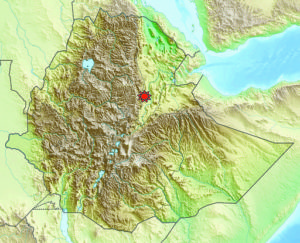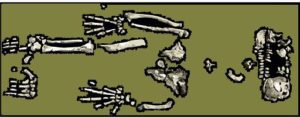

Images from Wikimedia Commons: Ardi skeleton and large map By Chartep (Own work)
Small map inset by Dr. Blofeld and User:NordNordWest; Labeling by Science15.com.
The above map pinpoints the Middle Awash paleoanthropological research area, which extends along both sides of the modern Awash River in the Afar Depression (Afar Triangle) of Ethiopia.
Source: Middle Awash Project
This area of Ethiopia has been the location of important hominid research, and is known particularly for two finds of what paleoanthropologists believe are human ancestors, known as Ardi and Lucy.
While Lucy is more widely known, having been found over a period of years starting in 1974, followed by other members of her species being eventually found, the discovery of Ardi, over a period of years in the 1990s, has caused scientists to re-evaluate their theories of human evolution formed after discovery of Lucy.
What was the importance of Ardi’s discovery?
Ardipithecus ramidus, affectionately nicknamed Ardi, was unearthed over the course of several years in the mid-’90s in an area known as Middle Awash, where scientists located more than 125 bone fragments from the same female skeleton.
Since then, scientists from around the world have been studying various aspects of what these bone fragments and other fossils suggest about this ancient hominid and the area where she lived in an effort to create a more detailed picture of the past.
In the October 2, 2009, issue of Science, more than 40 of these scientists from across a broad range of disciplines came together to release 11 research articles that give us that fuller picture. In it, we learn, among other things, that this creature walked upright, but had an opposable big toe that allowed it to climb trees and walk along their boughs; that Ardi did not have the knuckle-walking abilities of today’s chimpanzees or gorillas, meaning that its hands were flexible; and that it lived in an area of forestland, not in the savannah, as had previously been hypothesized.
Source: Sciencenetlinks
To see a VIDEO (10 minutes) explaining Ardi’s discovery and significance, visit the next page.



